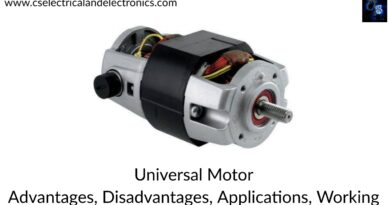Question and Answers On House Wiring
Hello Guys, welcome back to my blog. In this article, I will discuss some question and answers on house wiring, questions, and answers which are related to housing wiring and materials used during wiring.
If you want an article on some other topics then comment us below in the comment box. You can also catch me @ Instagram – Chetan Shidling.
Also read – Power Electronics Questions And Answers.
Question and Answers On House Wiring
01. What is the difference between wire and cable?
A. The single wire may be bare or covered with insulation is called the wire while several wires stranded together is called the cables.
02. Why the conductor is covered with insulating material?
A. The conductor is covered with insulating material so as to prevent leakage of current from the conductor.
03. What are the essential properties, which the insulation used in cables must be possessed?
A. The insulating materials used in cables must have the properties of high resistivity, high flexibility, high dielectric strength, non-inflammability, non-hygroscopicity, highly resistive to moisture, acids or alkalies and capability to withstand high rupturing voltages and high temperature without much deterioration.
04. Which insulation is most widely used for covering wires/cables used in internal wiring?
A. PVC
05. Why multi-strand conductors are preferred over solid conductors?
A. Multi-strand conductors are preferred over solid conductors because they provide flexibility and durability.
06. PVC cables are most widely used in internal wiring. why?
A. PVC cables are most widely used in internal wiring because PVC insulation provides better flexibility, has better insulating qualities, has no chemical effect on the metal of wire, and gives the smaller diameter of the cable.
07. Where are flexible cords used?
A. Flexible cords are used as connecting wires for such purpose as from ceiling rose to the lamp holder, socket outlet to portable apparatus such as radios, fans, lamps, etc.
08. What is meant by the voltage grading of cables?
A. Voltage grading of cable specifies the safe voltage which the insulation of the cable can withstand.
09. How the size of a wire or cable is given?
A. The size of a wire or cable is specified giving a number of strands used and the diameter of each strand or giving the area of cross-section of conductor used.
10. How are the cables specified?
A. The cables are specified providing the size of conductor used, type of conductor used, number of cores that cable consists of, voltage grade, and type of cable.
11. What is meant by the distribution board?
A. A distribution board is an assembly of parts, a number of one or more protective devices like fuse or CB, arranged for the distribution of electrical energy to different switchboards or circuits or other distribution boards known as sub-main distribution boards.
12. What is meant by a switch?
A. A switch is a device that is used for making or interrupting the electric circuit in a convenient way.
13. What for ceiling rose is used?
A. The ceiling rose is used for connecting the pendant lamps, fans, or fluorescent tubes to the installation through flexible plastic or silk covered wire.
14. What is meant by a fuse?
A. Fuse is a protective device used in an electrical circuit for protecting electrical equipment against overloads or short circuits.
15. On what principle does the fuse operate?
A. The action of a fuse is based upon the heating effect of the electric current. During overloads or short circuits, the fuse gets to come to a melting point due to high current and breaks the circuit.
16. What kind of protection is offered by a fuse?
A. The fuse provides protection against short circuits and overloads.
17. Give the names of five materials with their melting points that are used for the fuse element?
A. The materials commonly used for fuse elements are silver, tin, lead, copper, and aluminum. Their melting points are 980 degrees C, 240 degrees C, 328 degrees C, 1090 degrees C, and 665 degrees C respectively.
18. What material is mostly used for an ordinary fuse wire?
A. Copper or lead-tin alloy.
19. What is the fuse link?
A. The fuse link is that part of the fuse which needs replacement when the fuse blows out.
20. On what factors does the fusing current depend?
A. The fusing current depends upon (a). the diameter of the wire (b). length of wire (c). fuse material (d). x-sectional area (d). size and location of terminals (e). Type of enclosure used (f). Type of surface etc.
I hope these questions will help you all a lot…
Tags: Question and Answers On House Wiring, QNA for wiring, question, and answer for house wiring.
Also, read:
- 10 Tips To Maintain Battery For Long Life, Battery Maintainance
- 10 Tips To Save Electricity Bills, Save Money By Saving Electricity
- 100 (AI) Artificial Intelligence Applications In The Automotive Industry
- 100 + Electrical Engineering Projects For Students, Engineers
- 1000+ Control System Quiz, Top MCQ On Control System
- 1000+ Electrical Machines Quiz, Top MCQs On Electrical Machines
- 1000+ MATLAB Simulink Projects For MTech, Engineering Students
- 50 Tips To Save Electricity At Home, Shop, Industry, Office
- 50+ Question And Answer On The Substation, Electrical Question
- 500+ Matlab Simulink Projects Ideas For Engineers, MTech, Diploma
- 500+ Projects For Diploma Electrical, Electronics Student, Diploma Project
- Active Cell Balancing Using A Flyback Converter Simulation In Matlab Simulink
- AI Artificial Intelligence Applications In Electric Vehicles | Future?
- AI Tools For Electronic Circuit Design, Which Is Best?
- Applications Of Artificial Intelligence (AI) In Renewable Energy
- Automotive Industry Or VLSI Chip Industry ? Which Is Best?
- Basic Electrical Engineering, Terms, Definitions, SI Unit, Formula
- Basic Electrical Quiz, Take Online Test On Basic Electrical, Electrical Quiz
- Battery C Rate Online Calculator With Time Calculation
- Battery Management Systems In Electric Vehicles, BMS Operations
Author Profile
- Chetu
- Interest's ~ Engineering | Entrepreneurship | Politics | History | Travelling | Content Writing | Technology | Cooking
Latest entries
 All PostsApril 19, 2024What Is Vector CANoe Tool, Why It Is Used In The Automotive Industry
All PostsApril 19, 2024What Is Vector CANoe Tool, Why It Is Used In The Automotive Industry All PostsApril 13, 2024What Is TCM, Transmission Control Module, Working, Purpose,
All PostsApril 13, 2024What Is TCM, Transmission Control Module, Working, Purpose, All PostsApril 12, 2024Top 100 HiL hardware in loop Interview Questions With Answers For Engineers
All PostsApril 12, 2024Top 100 HiL hardware in loop Interview Questions With Answers For Engineers All PostsMarch 22, 2024Driver Monitoring Systems In Vehicles, Working, Driver Sleepy Alert
All PostsMarch 22, 2024Driver Monitoring Systems In Vehicles, Working, Driver Sleepy Alert








